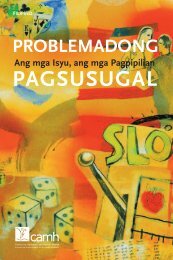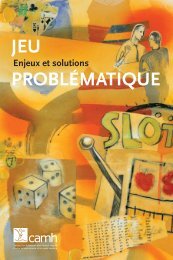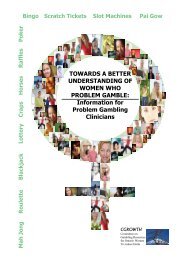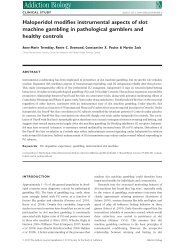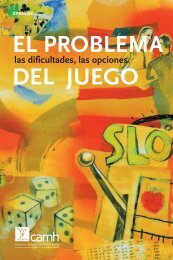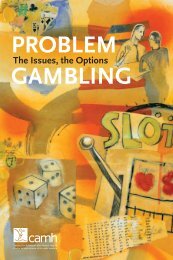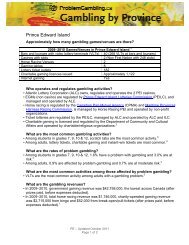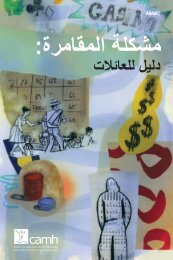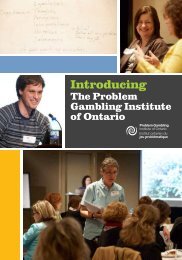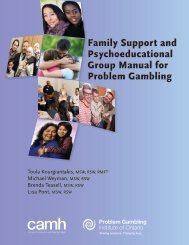Youth Making Choices: Gambling Prevention Program
Youth Making Choices: Gambling Prevention Program
Youth Making Choices: Gambling Prevention Program
You also want an ePaper? Increase the reach of your titles
YUMPU automatically turns print PDFs into web optimized ePapers that Google loves.
Unit 3: ProbabilityAppendix BTeacher Resource 2 p. 1RandomnessIntroductionStudents review the Conveyer Belt found in Student Resource 3, and discuss the concept ofrandomness. The teacher can also use the video The Slot Machine: What Every Player Needs toKnow, available at www.knowyourlimit.ca. This video describes the concept of randomness.Class DiscussionThe Conveyor Belt Figure 1 illustrates what people often believe random chance is like. Theyseem to believe that the prizes are on a conveyor belt that is moving forward. With each spin,the possible win moves closer. Figure 2 illustrates a more realistic depiction in which the chanceof winning the big prize does not change no matter how often the person has played. A personnever knows if he or she is about to win. This is true regardless of the type of gambling, be itslots, dice, cards, horse race bets or sports bets—the simple truth is that no matter what hasoccurred, a person’s chances of winning are exactly the same from bet to bet. Someone couldwin on the first spin, or not win for hour after hour.Teacher NotesWhat does “random” mean?• Games of chance use random-numbers generators such as dice, shuffling of cards, flippingof coins or computer programs to generate random experiences for the players.• Random does not mean that something has no cause. Random events are the results offorces such as gravity, wind, rain and temperature, but these forces are combined in a waythat makes it impossible to predict what will happen.• Random events are the result of complexity, which means too many forces are at work to keeptrack of. For example, think of all the different forces at work when you roll dice (what size thedice are, how hard you throw them, whether you shake them, how level the table is, where theyland). Flipping a coin is too simple to serve as a good example of random chance because itis too easy to manipulate. A good magician can learn the skill to time a coin flip to land on theside he wants. A pair of dice is much better because the movement and bounce of the dice ismore complex and much harder to manipulate.• You can compute your chances of winning, but you cannot tell if or when you will win.For example, if you play a lottery, you might hear the phrase “1 in 10 chance of winning.”However, this does not mean that if you play 10 times, you will definitely win once.Random events are independent• Independence means that one event cannot affect any other.• The fact that heads have come up 10 times in a row tells you nothing about what will comeup next. The chances of a head coming up are the same regardless of what has come upalready. Coins and dice have no memory. Even if your coin came up heads 20 times in a row,that would still not tell you which side will come up next.• You could win all the time, some of the time or not at all, because random events areindependent of each other.<strong>Youth</strong> <strong>Making</strong> <strong>Choices</strong>: <strong>Gambling</strong> <strong>Prevention</strong> <strong>Program</strong>www.Problem<strong>Gambling</strong>.ca3.24




